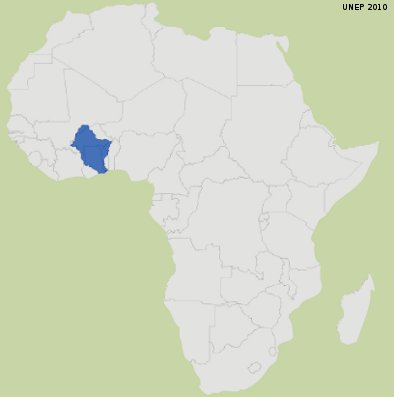It spreads over six riparian West African countries (Benin to the east, Burkina Faso to the north, Côte d'Ivoire to the west, Mali, Togo and Ghana to the south). The total basin population is estimated at a little over 14 million inhabitants, with an annual growth rate estimated at 2.9 %.
Increasing pressure on the natural resources
The rapid growing population is increasingly adding pressure on land and water resources. The hydrographical network of the basin is delineated into three main sub-catchments: the Mouhoun (Black Volta), the Nakambé (White Volta) and the Oti River.
The Akosombo dam on which Ghana draws over 80% of its energy supply is by far the most significant structure built in the basin and the Volta Lake is created out of the dam is the largest man-made lake in the World. The Volta Lake reservoir itself has a surface area of about 8,500 km2, an average depth of about 18.8m and a shoreline of about 5,500 km.
Climate change in the Volta basin
The climate of the Volta Basin is predominately semi-arid and sub-humid hence the potential evaporation in this semi-arid climate exceeds precipitation. The rainfall regime in the basin is divided into dry and rainy season which is largely influenced by the West African Monsoon (WAM).
All climate predictions in the basin point to reduction in water availability and higher temperatures with increased evapo-transpiration. These factors alone have the potential to negatively affect water availability for energy production and agriculture now and in the foreseeable future.
High variability of rainfall patterns and distribution is the main factor causing fluctuations in food production in the Volta Basin especially the northern parts. However, climate change makes rain-fed agriculture increasingly unreliable.
Climate change will not only affect rainfall, evapo-transpiration and river flows directly, but also lead to an increase of water demand for irrigation. Throughout the Volta Basin this will lead to an expansion of irrigated agriculture.
The growing scarcity of water resources
Rainfed and to some extent irrigated agriculture are the principal basis of livelihoods and development for most of the people living in the basin.
The population is mainly dependent on rainfed agriculture and therefore highly vulnerable to the spatial and temporal variability to rainfall and climate change. However, the unreliable rainfall situation in the basin creates difficulties in meeting food production targets, and requires that more attention is paid to agricultural programmes to ensure food security.
Even though the per capita water availability of the basin may be perceived as normal, deforestation, land degradation, and high population growth rate coupled with climate change will exacerbate the growing scarcity on water resources as water supplies dwindle and become insufficient to meet the water demands of the growing population.
As water crises are forecasted for the future, and meeting the water demands of the increasing population in the Volta basin is closely tied to understanding and the development of water resources in order to prevent their depletion in the face of climate change.
